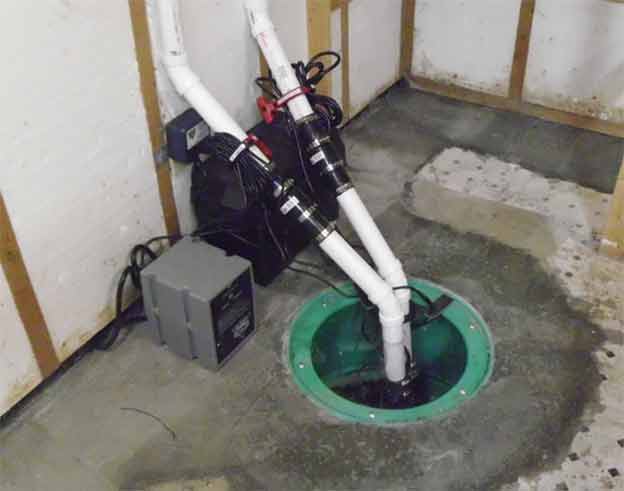
A functional sump pump is your first defense against flooding in the basement or other low-lying areas of your house. The sump pump makes it possible to know that your home is safe from flood damage even when you are away from the property, explains RedSail Property Management. It relieves you of the need to watch for signs of impending floods.
That is why it is vital to ensure your sump pump is always in good shape. As far as basement flooding is concerned, there is no worse scenario than to think your home is protected by a sump pump only to wake up to a flood inside the house. Sadly, this happens often, and most times, it is due to a sump pump failure that the homeowner failed to detect.
Sump pumps fail for several reasons. Sometimes, the problem can be as simple as a stuck float that fails to activate the sump pump switch. Other times, it could be due to a frozen/clogged discharge line or improper maintenance of the pump by the owner. Lastly, your sump pump is also likely to fail if it has reached the end of its useful life.
Many homeowners have no clue how long the sump pump in their home is supposed to last, so they keep using the machine long after it has passed its expiration date. The problem with doing that is a sump pump that is past its replacement date becomes increasingly unstable. The machine is going to lose efficiency, and it is also more likely to fail.
How do you know when it is time to replace the sump pump in your home?
7 signs it is time to replace your sump pump
Before we talk about how to know when it is time to replace your sump pump, let’s discuss how long a sump pump should last. On average, you should expect 7-10 years of service out of your sump pump. But how long the machine lasts depends on the quality of installation and maintenance, the rate of use, how much water it has to displace, and the average runtime.
If your sump pump is over seven years – nearing its 10th year – it is a good idea to replace it. A new sump pump does not cost a lot, but the damage that can happen if that old sump pump fails will cost you tens of thousands of dollars to fix. In addition to the age of the system, here are the other signs that it is time to replace your home sump pump.
Excessive vibration when running
Sump pump impellers are balanced to minimize stress on the shaft when they spin. A bent or damaged impeller will wobble and cause the entire pump to vibrate. It places pressure on the shaft and predisposes the sump pump to fail.
The motor won’t stop running
The sump pump will run continuously if it handles more water than it should. Your home’s sump pump should be carefully chosen to match the volume of water that enters the basement. If a sump pump runs continuously, it is too small for your home.
The sump pump doesn’t power on
Common reasons a sump pump might fail to come on are; issues with the float, a broken switch, loss of power, or a damaged motor. The pump motor will get damaged if the machine sucks up a lot of sediment.
Strange noises from the sump pump
During normal functioning, a sump pump should only emit a low hum. If the sump pump produces anything higher than a low hum, it is because the sump pump has damaged or worn parts.
Frequently cycles on and off
When a sump pump cycles on and off frequently, it is usually because the sump basin is too small for the volume of water coming into the basement. The motor may burn if the sump pump frequently cycles on and off.
Visible rust on the sump pump
Pay attention to rust-colored marks on the body of a sump pump. They could be a sign of corrosion on the sump pump battery terminals. It could also signify that iron bacteria are active in the water and interfering with the sump pump.
You need a backup system
If your area sees a lot of flooding and thunderstorms are bad enough to knock out the power, you may want to invest in a second sump pump. A secondary pump that is installed with a built-in battery backup system will protect your home if the primary sump pump loses power.
If you are thinking of replacing your sump pump, when is the best time to do it? It is best to replace sump pumps in early spring, early fall, or winter. Waiting until the middle of spring will leave you with higher costs. If you see any sign that it is time to replace the sump pump, you ought to do it today.
